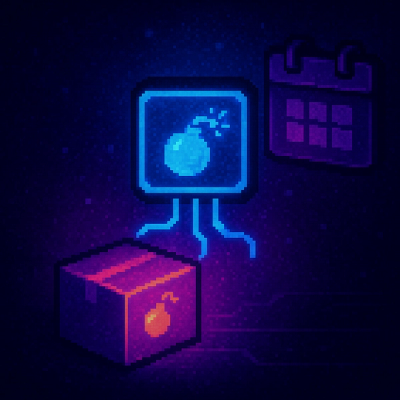
Research
/Security News
9 Malicious NuGet Packages Deliver Time-Delayed Destructive Payloads
Socket researchers discovered nine malicious NuGet packages that use time-delayed payloads to crash applications and corrupt industrial control systems.
This module can re-encode one or more images of the same size. It supports stiching multiple images together into a single image, alpha-compositing, color quantization, and various compression options to produce highly optimized output.
var blend = require('blend');
var image1; // Contains a compressed PNG image as a buffer.
var image2;
blend([ image1, image2 ], function(err, result) {
// result contains the blended result image compressed as PNG.
});
blend([ image1, image2 ], {
format: 'jpeg',
quality: 90
}, function(err, result) {
// result contains the blended result image compressed as JPEG.
});
format: jpeg, png, or webpquality: integer indicating the quality of the final image. Meaning and range differs per format. For JPEG and webp the range is from 0-100. It defaults to 80. The lower the number the lower image quality and smaller the final image size. For PNG range is from 2-256. It means the # of colors to reduce the image to using. The lower the number the lower image quality and smaller the final image size.width: integer, default 0: final width of blended image. If options provided with no width value it will default to 0height: integer, default 0: final width of blended image. If options provided with no height value it will default to 0reencode: boolean, default falsematte: when alpha is used this is the color to initialize the buffer to (reencode will be set to true automatically when a matte is supplied)compression: level of compression to use when format is png. The higher value indicates higher compression and implies slower encodeing speeds. The lower value indicates faster encoding but larger final images. Default is 6. If the encoder is libpng then the valid range is between 1 and 9. If the encoder is miniz then the valid range is between 1 and 10. The reason for this difference is that miniz has a special "UBER" compression mode that tries to be extremely small at the potential cost of being extremely slow.palette: pass a blend.Palette object to be used to reduced PNG images to a fixed array of colorsmode: octree or hextree - the PNG quantization method to use, from Mapnik: https://github.com/mapnik/mapnik/wiki/OutputFormats. Octree only support a few alpha levels, but is faster while Hextree supports many alpha levels.encoder: libpng or miniz - the PNG encoder to use. libpng is standard while miniz is experimental but faster.npm install blend@latest
To run tests for this module, run npm install --dev to install the testing framework, then
npm test. Tests require Imagemagick for its compare utility.
1.2.0
FAQs
High speed image blending and quantization
The npm package blend receives a total of 3 weekly downloads. As such, blend popularity was classified as not popular.
We found that blend demonstrated a not healthy version release cadence and project activity because the last version was released a year ago. It has 36 open source maintainers collaborating on the project.
Did you know?

Socket for GitHub automatically highlights issues in each pull request and monitors the health of all your open source dependencies. Discover the contents of your packages and block harmful activity before you install or update your dependencies.

Research
/Security News
Socket researchers discovered nine malicious NuGet packages that use time-delayed payloads to crash applications and corrupt industrial control systems.

Security News
Socket CTO Ahmad Nassri discusses why supply chain attacks now target developer machines and what AI means for the future of enterprise security.

Security News
Learn the essential steps every developer should take to stay secure on npm and reduce exposure to supply chain attacks.